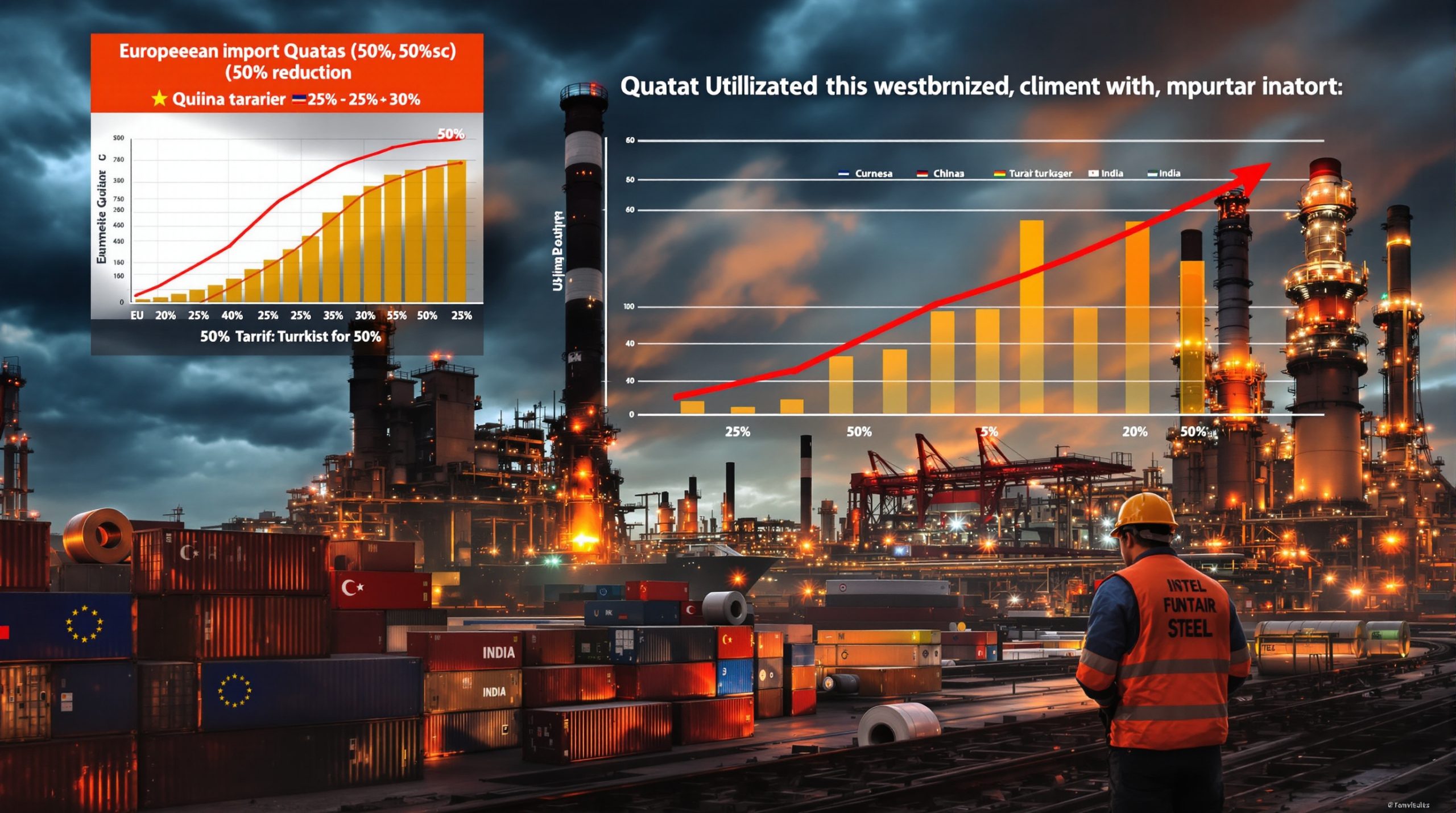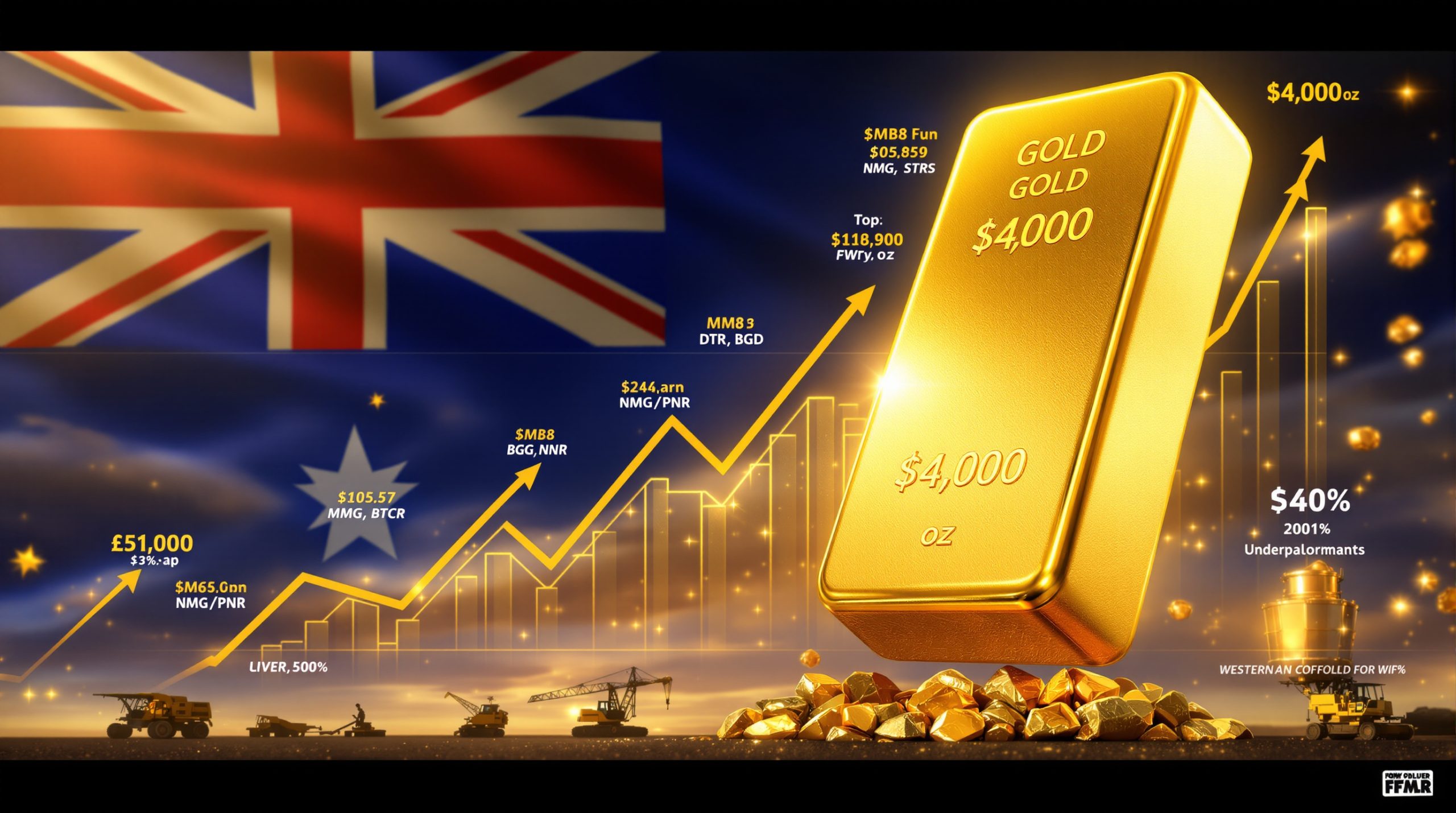The Critical Minerals Dilemma: Navigating Between Future Demand and Current Oversupply
Critical minerals form the backbone of modern technology and the energy transition minerals. These resources—including lithium, nickel, cobalt, graphite, copper, and rare earth elements—are essential components in everything from smartphones to electric vehicles and renewable energy infrastructure.
Their strategic importance has grown exponentially as countries worldwide commit to decarbonization targets, creating a complex market dynamic where future demand projections often contrast sharply with current market realities.
The Definition Challenge: What Makes a Mineral "Critical"?
Different nations define critical minerals differently based on their strategic needs, economic importance, and supply risk. For instance:
-
The United States lists 54 minerals as critical to national security and economic prosperity
-
Australia focuses on 26 minerals essential for their economy and defense
-
The European Union designates 34 raw materials as critical based on economic importance and supply risk
These definitions evolve as technologies advance and geopolitical landscapes shift, creating a moving target for industry planning.
How Significant Is the Projected Demand Growth?
The Fourfold Increase Projection
Current market analysis points to dramatic growth in demand for energy transition metals. According to data presented at the International Critical Minerals and Metals Summit in Bali, demand for key energy transition metals is expected to increase fourfold between 2025 and 2035.
| Mineral Group | 2025 Demand (est.) | 2035 Projected Demand | Growth Factor |
|---|---|---|---|
| Battery Metals Combined | ~3 million tonnes | ~12 million tonnes | 4× |
| Copper for Green Tech | Current production | +909,000 tonnes needed | Significant expansion required |
This projected quadrupling of demand within a decade represents one of the most significant mineral resource challenges in modern history.
Technology-Driven Demand Catalysts
Several key technologies are driving this anticipated surge:
-
Electric Vehicles: Requiring 6× more minerals than conventional vehicles, with battery metals like lithium, graphite, nickel, manganese, and cobalt all essential components
-
Grid-Scale Energy Storage: Essential for managing intermittent renewable energy, creating additional demand for lithium, vanadium, and other storage-related minerals
-
Renewable Energy Infrastructure: Wind turbines use up to 4× more copper than traditional power generation, while solar panels require specialized minerals including silver, tellurium, and indium
-
Electronics Manufacturing: Continuing to expand globally, with each new generation of devices requiring more specialized mineral inputs
What's Causing the Current Market Imbalance?
The Oversupply Paradox
Despite long-term bullish forecasts, current market conditions tell a different story. The contrast between today's soft pricing for critical minerals and projected future demand growth was a central theme at recent industry gatherings.
-
Copper: According to Fastmarkets analysis, the global copper market insights show the market is expected to maintain a surplus through 2026, with a slightly larger surplus of just under 200,000 tons anticipated in 2026, followed by a tiny deficit in 2027. Significant deficits are only expected to emerge in 2033-2034.
-
Nickel: Prices dropped to five-year lows in May 2025, currently trading at $15,175 per ton (as of September 2025), representing only a third of their March 2022 peak.
-
Lithium: Experiencing significant price corrections after previous highs, with oversupply concerns dominating near-term market sentiment.
-
Cobalt: Facing similar downward price pressure despite its long-term importance in high-performance batteries.
Why Are Prices So Weak Despite Strategic Importance?
Several factors contribute to the current supply-demand imbalance:
1. Policy-Driven Overcapacity
Government industrial policies have created significant overcapacity, particularly in:
-
China: Overbuilt refining capacity for lithium and cobalt as part of broader industrial policy initiatives aimed at dominating clean energy supply chains.
-
Indonesia: Achieved nickel market dominance through aggressive downstream processing investments, creating significant oversupply that continues to weigh on global prices.
2. Demand Growth Timeline Mismatch
The anticipated demand surge is materializing more slowly than many producers expected:
-
EV adoption rates have grown steadily but not explosively in many markets, with charging infrastructure and affordability remaining barriers
-
Grid storage deployment faces regulatory and infrastructure hurdles that have delayed large-scale implementation
-
Economic headwinds in major economies have dampened near-term growth prospects for advanced technologies
3. Investment Cycles vs. Market Needs
Mining projects operate on decade-long timelines, creating mismatches between investment decisions and market conditions:
-
Projects initiated during previous price spikes are now coming online during softer markets
-
Long lead times make it difficult to time production with demand surges
-
Capital-intensive nature of mining requires significant upfront investment, often based on long-term forecasts that may not materialize as expected
How Does This Compare to Previous Market Cycles?
The Iron Ore Precedent
The current situation mirrors the iron ore market dynamics of the previous decade:
-
Major producers in Australia and Brazil expanded output faster than Chinese demand growth in anticipation of continued robust consumption
-
Prices initially crashed to multi-year lows as supply outpaced demand growth
-
Eventually, prices recovered dramatically as Chinese steel production reached and maintained 1 billion tons annually by 2020, representing approximately 50% of global production
This pattern suggests a potential recovery path for critical minerals, though with important differences in market structure and demand drivers. Unlike iron ore, which depends primarily on steel production in a few major economies, critical minerals face a more complex demand landscape spread across multiple industries and regions.
What Geopolitical Factors Are Reshaping Critical Mineral Markets?
The China Factor
China's dominance across critical mineral supply chains creates both market and geopolitical tensions:
-
Controls significant portions of processing capacity for lithium, rare earths, and other critical minerals
-
Accounts for approximately 70% of global rare earth element production
-
Dominates battery manufacturing with over 75% of global capacity
This concentration of control raises concerns about supply security and has prompted various policy responses from Western nations and their allies.
Western Supply Chain Diversification Efforts
Efforts to develop non-Chinese supply chains add another layer of complexity:
-
The Inflation Reduction Act: Providing significant incentives for domestic US production and processing of critical minerals
-
EU Critical Raw Materials Act: Setting targets for European sourcing and processing to reduce dependency on external suppliers
-
Minerals Security Partnerships: Creating multinational frameworks for supply chain development among like-minded nations
These initiatives may ultimately add more supply to certain markets, potentially further depressing prices in the near term while strengthening long-term security. The challenge lies in balancing market forces with strategic imperatives—a tension that will likely define critical minerals markets for years to come.
How Should Companies Navigate This Complex Landscape?
Strategic Approaches for Producers
Mining companies face difficult strategic choices in this environment:
1. Cost Management and Operational Excellence
-
Focus on lowering production costs to weather prolonged price weakness
-
Optimize existing operations rather than pursuing aggressive expansion
-
Implement technological innovations to improve efficiency and reduce environmental footprint
This approach requires discipline and patience, prioritizing survival during weak markets while maintaining the ability to capitalize on eventual price recovery.
2. Strategic Partnerships and Vertical Integration
-
Form alliances with downstream manufacturers to secure offtake agreements and share risk
-
Consider vertical integration to capture more value across the supply chain
-
Partner with governments seeking supply security, potentially accessing concessional financing or other support
By aligning with end-users and policymakers, producers can create more stable demand channels while reducing exposure to spot market volatility.
3. Portfolio Diversification
-
Balance exposure across different critical minerals to hedge against individual commodity volatility
-
Consider geographic diversification to mitigate country-specific risks
-
Maintain flexibility to adjust production based on market conditions
Diversification provides resilience against the boom-and-bust cycles that characterize individual mineral markets while positioning companies to benefit from broader energy transition trends.
What Does This Mean for the Energy Transition?
The Supply Security Challenge
The current market dynamics create potential challenges for the energy transition:
-
Prolonged price weakness could discourage investment in new production capacity
-
Supply shortfalls could emerge suddenly if demand accelerates faster than anticipated
-
Geopolitical tensions may fragment supply chains and increase costs
These factors could potentially slow the pace of decarbonization if not properly addressed through coordinated policy and market responses.
Potential Solutions
Several approaches could help bridge the gap between current market realities and future needs:
-
Long-term Offtake Agreements: Providing revenue certainty for producers while securing supply for manufacturers
-
Strategic Reserves: Government stockpiling of critical minerals to buffer against short-term supply disruptions and price volatility
-
Recycling Initiatives: Developing circular economy approaches to reduce primary material demand, with particular focus on battery recycling breakthrough technologies
-
Technological Innovation: Finding material substitutes or efficiency improvements to reduce mineral intensity per unit of clean energy deployed
These solutions require collaboration between industry, government, and research institutions to align incentives and share risks appropriately.
When Will Markets Rebalance?
Timing the Turnaround
Market analysts project different timeframes for supply-demand rebalancing:
-
Copper: Significant deficits expected by 2033-2034 according to Fastmarkets analysis, with only minor imbalances until then
-
Lithium: Market potentially rebalancing in the latter half of this decade as EV adoption accelerates in major markets
-
Nickel: Longer recovery timeline due to substantial Indonesian production increases that continue to outpace demand growth
The timing will likely vary significantly by mineral, with those facing the most severe oversupply taking longest to recover. However, these forecasts carry significant uncertainty, as technological shifts, policy changes, or geopolitical developments could dramatically alter market dynamics.
What Should Investors Watch For?
Key Indicators of Market Direction
Several signals may indicate shifting market dynamics:
-
EV Penetration Rates: Acceleration beyond current growth trajectories in major auto markets, particularly China, Europe, and North America
-
Grid Storage Deployment: Large-scale projects moving from planning to implementation phases, particularly in regions with high renewable energy penetration
-
Supply Discipline: Major producers delaying or canceling expansion projects in response to weak pricing
-
Policy Implementation: Actual deployment of announced government initiatives supporting critical mineral production and processing
-
Technology Shifts: Changes in battery chemistry or other applications that alter demand profiles for specific minerals
Investors should monitor these indicators while maintaining a long-term perspective that accounts for the inherent cyclicality of commodity markets.
How Can Critical Mineral Supply Chains Become More Resilient?
Building Sustainable Supply Networks
Creating resilient critical mineral supply chains requires multifaceted approaches:
-
Geographic Diversification: Reducing concentration risk from single-country dominance through development of new mining regions
-
Investment in Exploration: Identifying new resource deposits globally to expand the potential supply base
-
Processing Technology Development: Creating more environmentally sustainable extraction methods that reduce costs and environmental impacts
-
Circular Economy Implementation: Developing effective recycling and reuse systems to capture value from end-of-life products
-
International Cooperation: Establishing frameworks for responsible resource development that balance commercial, environmental, and social considerations
These approaches require collaborative efforts between governments, companies, and civil society to ensure critical minerals support rather than hinder broader sustainability goals.
What Are the FAQs About Critical Minerals Markets?
Common Questions About Critical Minerals
Q: Are we facing critical mineral shortages that will derail the energy transition?
A: While long-term supply challenges exist, current market conditions feature oversupply in many critical minerals. The key challenge is aligning investment cycles with actual demand growth to prevent future shortages. Most analysts believe sufficient mineral resources exist geologically; the question is whether they can be developed economically and responsibly in time to meet demand.
Q: Which critical minerals face the most severe supply constraints?
A: Copper faces potential significant deficits in the 2030s based on current development pipelines, while rare earth elements used in permanent magnets (neodymium, dysprosium) may face earlier constraints due to concentrated production. Each mineral has unique supply chain characteristics that affect its vulnerability to disruption.
Q: How will recycling impact critical mineral markets?
A: Recycling will become increasingly important, potentially supplying 25-30% of some critical minerals by 2040, but cannot fully replace primary production during periods of rapid demand growth. The contribution of recycling varies significantly by mineral, with some (like aluminum and copper) more readily recoverable than others.
Q: What role will technological innovation play in addressing critical mineral challenges?
A: Innovation may reduce intensity of use for some minerals (e.g., cobalt-free batteries), but typically creates demand for alternative materials rather than eliminating mineral requirements entirely. Technology will likely help optimize resource use rather than fundamentally changing the need for minerals.
Balancing Present Reality with Future Potential
The critical minerals demand hopes and oversupply reality creates a sector at a pivotal crossroads. This tension creates both challenges and opportunities for producers, consumers, and policymakers.
Successfully navigating this landscape requires balancing short-term economic realities with long-term strategic imperatives. Companies that can weather current market weakness while positioning for future growth will likely emerge as leaders in the energy transition economy.
For policymakers, the challenge lies in creating frameworks that support supply security without distorting markets or creating unsustainable bubbles. Finding this balance will be essential to ensuring that critical mineral supply chains can support the pace and scale of the global energy transition.
The historical iron ore precedent suggests that markets eventually correct, but the pathway may be volatile and unpredictable. Unlike iron ore, which primarily served one industry (steel), critical minerals support diverse applications across multiple sectors, potentially creating more complex and resilient demand patterns over time.
As benchmark London copper contracts continue trading around $10,181.50 per ton (as of September 2025), roughly the same price as in 2021, the market appears to be waiting for clearer signals about the timing and scale of future demand growth. This period of price stability may provide an opportunity for strategic positioning ahead of eventual market tightening.
In this environment of contrasting short-term weakness and long-term optimism, a balanced approach that combines operational discipline, strategic industry partnerships, and focused mining innovation trends offers the best path forward for participants across critical mineral value chains.
Want to Spot the Next Major Mineral Discovery?
Stay ahead of the market with real-time alerts on significant ASX mineral discoveries through Discovery Alert's proprietary Discovery IQ model, which transforms complex data into actionable investment opportunities. Visit Discovery Alert's discoveries page to understand how early identification of major finds like De Grey Mining and WA1 Resources can generate substantial returns.




